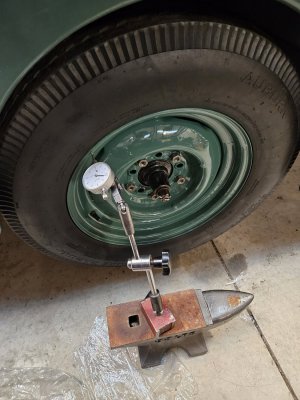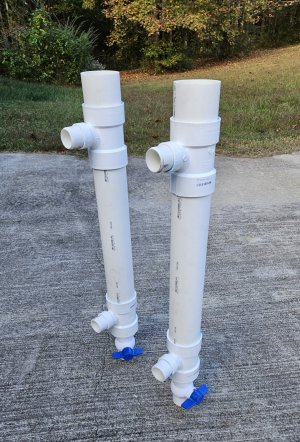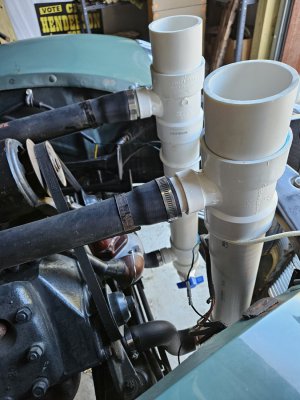- Joined
- Nov 28, 2016
- Messages
- 2,357
I've mounted all the tires on the new wheels, then dropped them off at a local tire shop for balancing. When I picked them up later, they told me that all four wheels were warped... two were slightly warped, one moderately, and the fourth one was badly warped.
I mounted them on the rear axle... one at a time... put an indicator on them and checked the runout both axially and radially...

... I can't seem to find any serious warping on any of them... one wheel had a radial runout of about 0.040". Otherwise, they were all between 0.015" and 0.030".
I'll get them installed and torqued and go for a drive and see if I get any vibrations... but I think they will be ok.
-Bear
I mounted them on the rear axle... one at a time... put an indicator on them and checked the runout both axially and radially...

... I can't seem to find any serious warping on any of them... one wheel had a radial runout of about 0.040". Otherwise, they were all between 0.015" and 0.030".
I'll get them installed and torqued and go for a drive and see if I get any vibrations... but I think they will be ok.
-Bear



